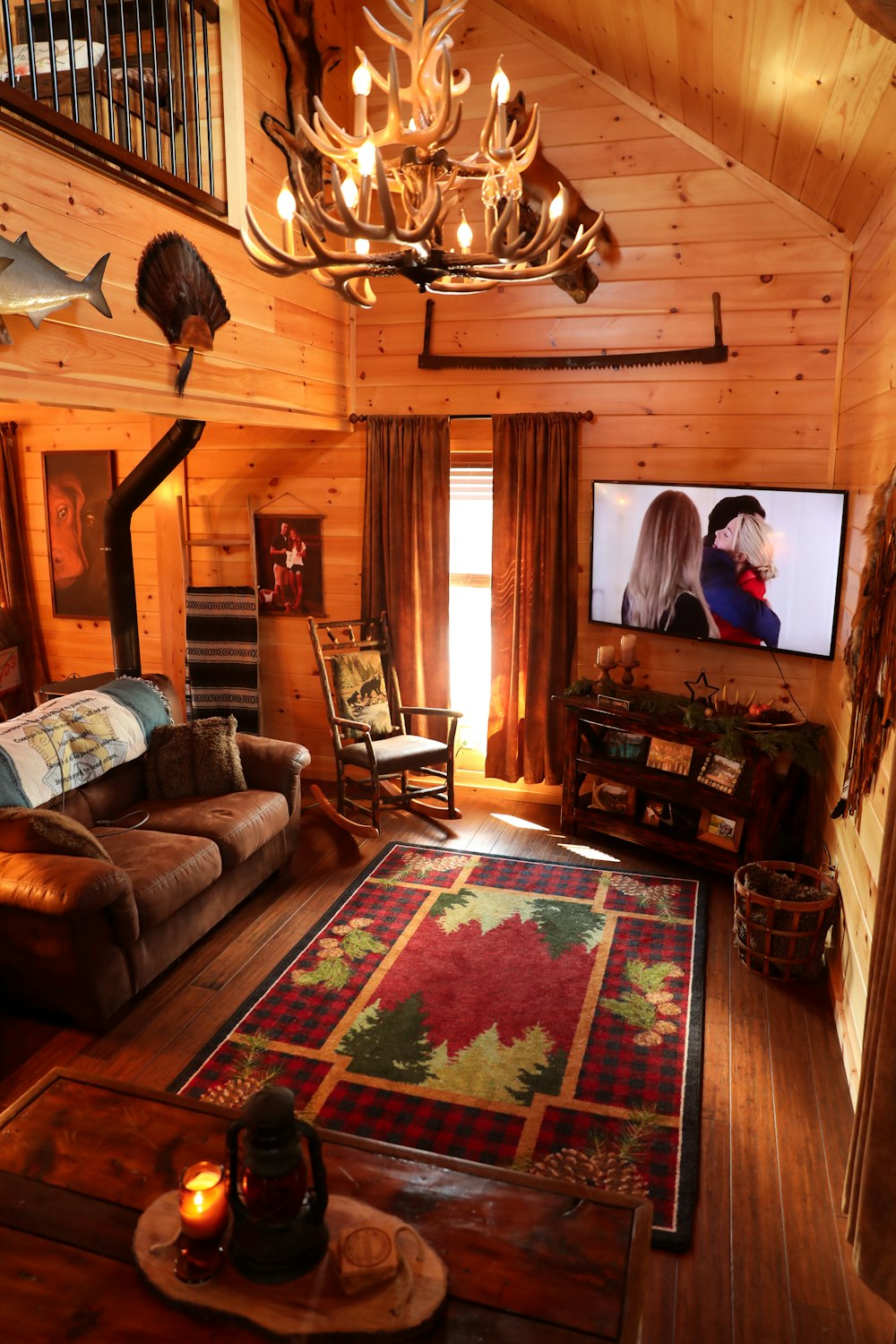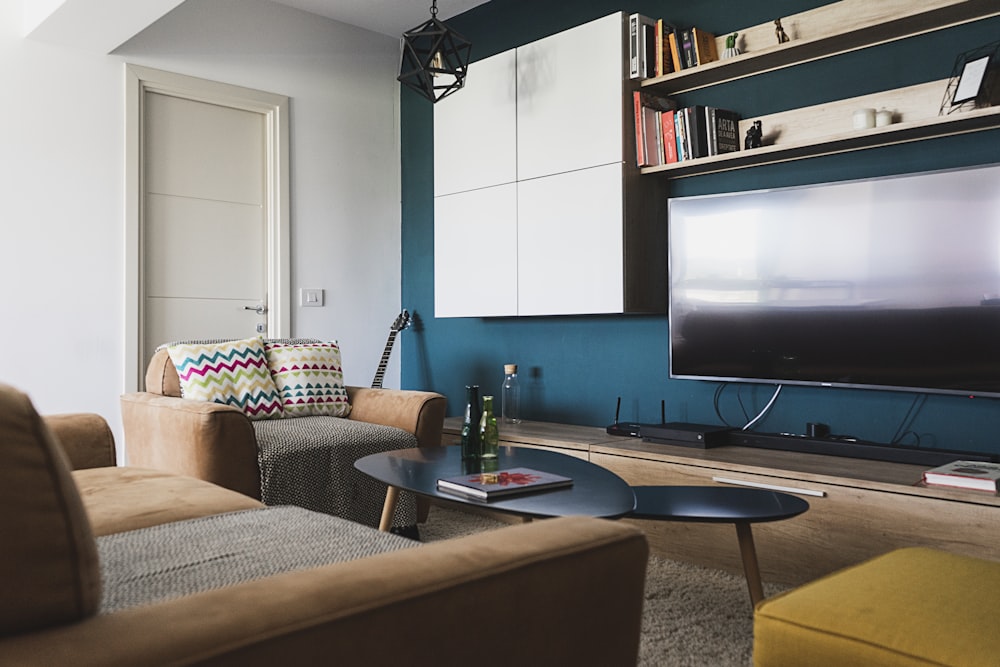Are you getting ready to add a home theater to your abode? Do you want it to be unique and memorable? Are you looking for some popcorn-popping home theater room ideas?
A home theater can give you the same experience as a real movie theater without having to get out of your pajamas. You’ll have front row tickets and no one loud blowing their nose in front of you.
Here are some of our favorite home theater room design tips.
1. Sports Palace
Sports fans will go crazy for a team-themed theater room. Consider hanging your favorite pendants, photos, and framed jerseys while you enjoy the ultimate sporting experience.
Home theater chairs are usually movie recliner chairs that are placed together and have armrests in between. These are a great place to hold your favorite brew while you sit back and watch the game.
Some sports fans get extra-creative with murals or baseball-diamond carpets. Add a mini-bar and you’ll have the ultimate relaxing and viewing experience.

2. Pool House Palace
Is your pool house not getting used? Consider turning it into a theater party all of your guests can enjoy while the lights twinkle off your pool.
Pool House Designs don’t need to be fancy. Place your large screen on a wall opposite two daybeds or futons. Throw up a few framed posters of your favorite screen icons, and you’ve got the perfect place to watch the magic happen.
Your pool house may already come equipped with a bar or bathroom, so making it a great place to host your friends for a great casual get-together won’t be hard to do.
3. She-Shed Show
Accessory dwelling units are a great place to house your entertainment experience. You can find movie theater seats at antique shops or online. Invest in a projector, sound system, and screen, and you’ve got an escape all of your friends will envy!
Decorate using some splashy or subtle paint color ideas and your favorite movie memorabilia. It’s the perfect place to enjoy your favorite flick away from the pressures of work and family.
4. Basement Family Room
Your basement is one of the most classic places to house an entertainment space. It’s also possible to create a theater in a small basement as long as your screen isn’t too big.
You’ll want your movie room to be as shielded as possible from distracting noises upstairs. You can soundproof your movie section by adding a second layer of drywall, or by replacing your existing drywall with sound-reducing wallboard.
It’s also important to know exactly where your audio-visual component rack will be. Your screen, cable box, and streaming box will all operate from the same unit. It needs to be near an electrical outlet and capable of bringing in an Internet source wire.
Your lighting system can be anything from simple track lighting to an elaborate system with dimmers and rope lights. You can add decor like red velvet walls, tiered seating, and even a popcorn maker. Before long, your basement will get transformed into a cinematic wonderland.

5. Science Fiction Fantasy
If your family’s favorite films to get lost in are all out in space, a science fiction hideaway may be the perfect place for screenings. Consider lights that dim and tiny twinkling lights embedded in ceiling tiles. The best colors for these types of rooms are grays and purples that will really enhance the spaceship experience.
6. Rustic Filming
If you have a side room or family room in a farmhouse style, these can be a great place for your home theater. Exposed beams and light woods look great when coupled with comfy leather couches and throw pillows.
A cozy farmhouse theater is a great place to invite guests to, or simply to get the whole family together for the viewing of something heartwarming.
7. Spare Bedroom
Maybe you’ve just bought your first home or you’re living in an empty nest. This could be a great place to create a movie room, although you’ll want to prepare it first.
You’ll need to insulate the room and prewire the sound. Make sure you know where your speakers are going to be so that you can run cables to them. You’ll also want to prewire your video projector and put the wiring in place for any special lighting you’ve got in mind.
Drywall and appropriate sound barriers will need to get installed. You’ll also need to set up your video and sound systems before bringing in your theater-style seating. Decorating is completely up to you!

8. Sophisticated Theater
Maybe your movie room will be more for business than pleasure. Dark woods, recessed lighting, and leather couches welcome visitors to catch up on the news or hold video conferences.
Decor placed in more business-like theater settings is more subtle. Consider adding black-and-white photos or personal touches like horse-racing or polo memorabilia.
A minibar with leather stools makes this type of room a great place to meet with colleagues like you would in a corner office. And with so much work being remote lately, you may find it’s the perfect place to make professional connections!
Home Theater Room Ideas
Home theater room designs keep evolving as they become more and more popular in individual homes. They can reflect your favorite movies, personality quirks, or house style. With a little creativity, you can find the perfect home theater room ideas to make your entertaining space an amazing escape.
Don’t stop getting smart about home designs now. For more inspiring ideas, read our blog today.

COZY MOVIE NIGHT DECOR….





































